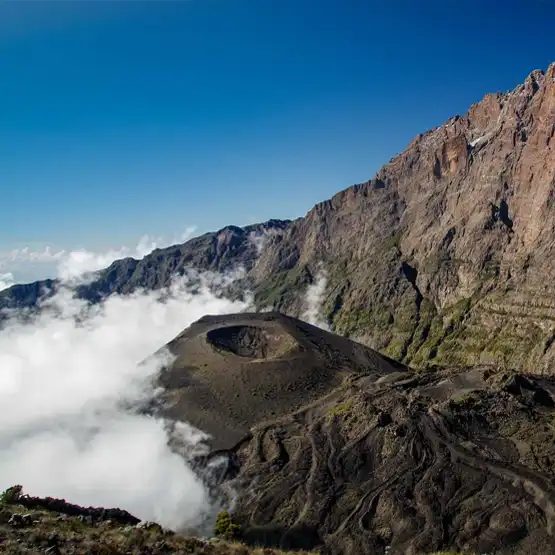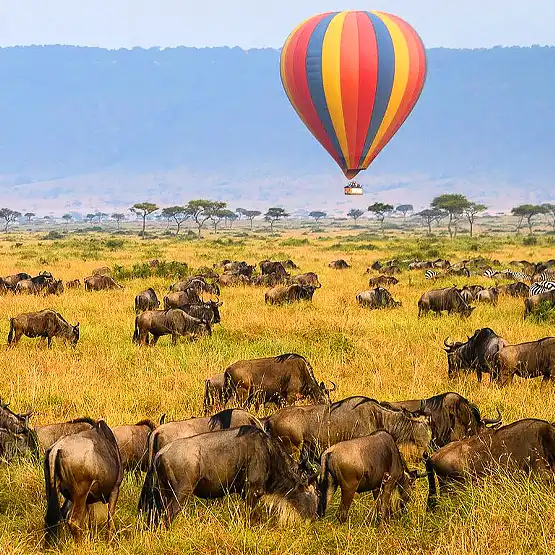When planning your wardrobe for a visit to Maasai and Hadzabe villages, it’s essential to think beyond mere comfort. Consider that these communities hold strong cultural beliefs, and your attire can reflect respect or disregard. Dressing appropriately becomes a crucial aspect of your interaction.
Historically, both the Maasai and Hadzabe people maintain vibrant, traditional clothing rooted in their rich cultural heritage. For instance, donning earth-tone garments can be seen as a sign of respect and humility. Lightweight, breathable fabrics are not only practical but show your thoughtfulness towards their customs and your own comfort in the often sweltering climate.
What to Wear When Visiting Maasai and Hadzabe Villages
When visiting Maasai and Hadzabe villages, attire should be both respectful and practical. Culturally appropriate clothing helps foster respect and understanding. Lightweight, breathable fabrics are recommended due to the hot climate. Earth tones blend well with the natural surroundings. Bright colors might be too flashy and not culturally appropriate.
One crucial factor is comfort. Loose-fitting clothes allow better air circulation, keeping you cool and comfortable. Consider wearing pants or long skirts to protect against insects and the sun. It’s also respectful to cover your shoulders. This shows acknowledgment of the local modesty standards.
Footwear is another important consideration while visiting these villages. It is vital to wear sturdy, closed-toe shoes. These will protect your feet from rough terrain and potential injuries. Sandals or flip-flops are not recommended, as they provide little protection. Hiking boots or similar footwear are ideal.
Accessories should be kept to a minimum. Avoid flashy jewelry that may draw unnecessary attention. Simple, functional items like hats and sunglasses are useful for sun protection. A backpack can carry essentials like water and a camera. Remember, showing respect through your attire enhances the overall experience.
Understanding Cultural Sensitivities
When visiting Maasai and Hadzabe villages, it’s crucial to understand and respect their cultural norms. Cultural sensitivities play a significant role in ensuring a positive interaction. For example, modest clothing is highly valued. Showing too much skin can be seen as disrespectful. Wearing respectful attire shows that you value their traditions.
Body language is also a key aspect of cultural sensitivity. Simple gestures like a handshake or a nod can mean different things in different cultures. It’s helpful to observe and mimic the locals’ behavior. This shows your respect for their customs. Avoiding direct eye contact can be seen as polite in some cases.
Another way to show respect is by observing local customs and traditions. Learning a few basic phrases in the local language can go a long way. It demonstrates your willingness to engage with the community. Small acts like greeting elders first show cultural awareness. These gestures can lead to a warmer reception.
Photography is another area where cultural sensitivity is needed. Always ask for permission before taking photos of people or their property. Some might find it intrusive or disrespectful. According to this article, understanding and respecting these boundaries is crucial. Respecting their privacy helps build trust and mutual respect.
Choosing Appropriate Fabrics and Textures
Choosing the right fabrics and textures is key when visiting Maasai and Hadzabe villages. The climate can be hot and can even shift to cooler temperatures in the evening. Light, breathable fabrics such as cotton or linen are recommended. These materials allow air to circulate, keeping you comfortable. They also dry quickly if you sweat.
Durability is another important factor to consider. The terrain can be rough and rugged, requiring sturdy materials. Choose fabrics that can withstand the environment, like twill or denim for pants. These materials are less likely to tear or wear out. A blend of comfort and durability is ideal.
Beyond just the material, texture also plays a role. Soft, non-irritating textures will prevent skin discomfort. Avoid fabrics that can cause chafing or are too coarse. Smooth textures are more comfortable for long periods of wear. This makes your overall experience more pleasant.
Layering is a practical tip for dealing with variable weather conditions. Lightweight jackets or cardigans can be easily added or removed. This way, you can adapt to sudden changes in temperature. According to this post, layering versatile pieces can enhance comfort. Always consider the flexibility of your clothing choices.
Which Colors are Most Suitable?
Choosing the right colors when visiting Maasai and Hadzabe villages is important both for cultural sensitivity and practicality. Earthy tones like brown, beige, and green blend well with the natural surroundings. These colors are less likely to draw too much attention. Muted shades are generally safer choices. Wearing these tones shows respect for the community.
The Maasai people are known for their vibrant red clothing. Red holds cultural significance for them, representing bravery and tradition. However, as a visitor, it’s best to avoid wearing bright red. This color is symbolic and holds special meaning for the Maasai. Sticking to more subdued colors shows you understand and respect their customs.
Dark colors like black and navy can also be practical. They tend to hide dirt and stains better, making them suitable for outdoor activities. However, be mindful that dark colors can absorb heat. In hot climates, this can make you feel warmer. So, it’s a balance between keeping cool and staying clean.
White and light-colored clothing can reflect the sun, keeping you cooler. Though practical, these colors can get dirty very quickly. Always consider the activities and environment when choosing light colors. Light shades can also be see-through, so ensure your clothing is appropriate. Layers can help address this issue.
Patterns and prints should be kept simple and subtle. Avoid overly bold or busy designs that might stand out too much. Simplicity is key when aiming to blend in and show respect. Solid colors or mild patterns are usually the best choices. The focus should be on respect and practicality.
Bright and flashy colors like neon should be avoided. They can be distracting and culturally inappropriate. The aim is to integrate seamlessly and respectfully into the community. Opting for these suitable colors can enhance your experience. According to this article, understanding local customs helps in making better clothing choices.
Footwear Considerations for Rough Terrains
Choosing the right footwear is crucial when navigating the rough terrains of Maasai and Hadzabe villages. Sturdy, closed-toe shoes are essential for protecting your feet. Hiking boots are highly recommended due to their durability. They provide excellent support and help prevent injuries. Comfort is key for long walks.
Water-resistant shoes can be beneficial, especially if there’s a chance of rain. Wet conditions can make the terrain slippery and challenging. Shoes with good traction will improve stability. This can help prevent slips and falls. It’s better to be prepared for various weather conditions.
Ankle support is another important consideration. High-top boots can offer better protection and support for your ankles. Rough terrains can be uneven and tricky to navigate. Enhanced ankle support helps in avoiding sprains. This makes your journey more comfortable and safe.
Breaking in your shoes before the trip is a smart move. New shoes can cause blisters and discomfort initially. Wearing them for short walks ahead of time can help. This ensures your feet are accustomed to the footwear. You’ll have a more pleasant experience during your visit.
For added comfort, consider using insoles or cushioned socks. These can provide extra padding and support. Long walks can be tiring without proper foot support. Cushioned socks also help in reducing friction that can cause blisters. Comfort should always be a top priority.
Carrying an extra pair of shoes or sandals is a good idea. Activities may vary, from hiking to relaxing in the village. According to this article, versatile footwear options can be beneficial. Packing an extra pair ensures you’re prepared for different scenarios. Always prioritize functionality and comfort.
Accessories: What’s Acceptable?
When visiting Maasai and Hadzabe villages, it’s important to choose your accessories wisely. Simplicity is key to showing respect for their customs. Flashy or extravagant jewelry can be seen as inappropriate. Stick to minimal and functional items. This approach helps you blend in better.
Sunglasses are practical for protecting your eyes from the sun. Choose a pair that is simple and not too showy. They can offer great relief from the harsh sunlight. A wide-brimmed hat is another useful accessory. It provides shade and can prevent sunburn.
Backpacks are perfect for carrying essentials like water, snacks, and a camera. Opt for one that is sturdy and not too large. Avoid bringing a fancy designer bag. Practicality is the goal here. Make sure your backpack is comfortable for long periods of wear.
Wristwatches are acceptable but should be simple in design. Avoid overly luxurious or tech-heavy watches. A basic analog or digital watch will suffice. This keeps your overall look modest. Remember, the focus should be on the experience, not on your accessories.
Belts can also be both functional and acceptable. Choose a plain, durable belt that complements your outfit. Avoid large, decorative belt buckles. The idea is to stay practical and respectful. A simple belt ensures your clothing stays in place during various activities.
Carrying a reusable water bottle is a smart choice. It’s not only environmentally friendly but also practical for staying hydrated. According to here is the article, such small, thoughtful choices can enhance your visit. Always prioritize functionality and respect in your accessory choices.







